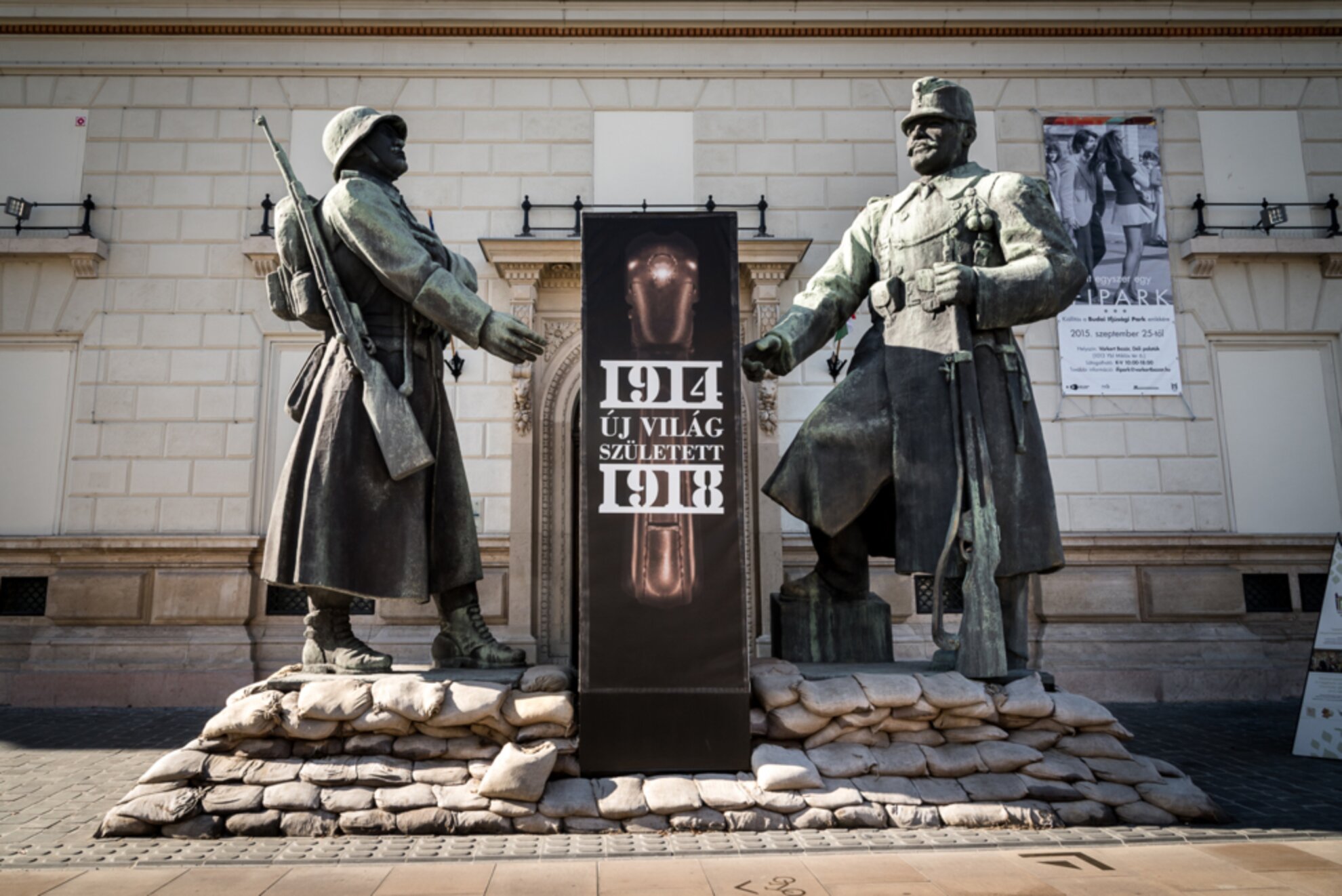While Hungary was only a secondary participant in World War I, the “Great War” had a disproportionately damaging impact on this country, which is still the cause of considerable bitterness – after the fighting concluded in 1918, the Treaty of Trianon stripped the Magyars of huge swaths of land, instantly casting millions of Hungarians outside of their national borders. With a striking combination of century-old relics and modern displays, a somber exhibition at Várkert Bazaar vividly showcases why the Hungarians still haven't bade a farewell to arms.
Happy peacetimeIt’s hard to miss the entrance to the “A New World Was Born” exhibit: two larger-than-life statues of WWI soldiers stand on sandbags in front of the southern buildings of the Várkert Bazaar. This is anything but a moderate form of advertising, but we don’t mind if cultural institutions are promoted in unconventional ways, especially since the events portrayed in this exhibition had such outsized impacts on Hungary that continue to this day.

Stepping into the exhibition space, a huge photo, few quotes, and music evocative of Hungary’s happier belle époque era set the initial mood. A quote from Napoleon reflects upon the subtitle of the exhibition: “A war between Europeans should be considered a civil war.”

Alongside English-language information, postcards from peacetime are mounted on the walls – but in the center of the exhibition space stands two lifelike horses and their riders. The two figures are set against each other – one is dressed as a traditional Hungarian hussar cavalryman, but the other wears a gas mask.

A new world is being bornThe second room is the most bizarre stop of the whole exhibition, one that effects nearly every sensory organ: a strange, sweet smell lingers in the dark room which can be described as a combination of a steaming swamp and a muddy trench. In the next rooms, visitors examine scenes of everyday life for those who stayed on the home front, along with nurses and animals who served the war effort in varied capacities.

The following room is decorated with images of railroad wagons. On one of the walls you can read the statement “trip to Belgrade” – which is confusing since after the swampy space we are transported back in time to the era when soldiers went to war in an unintelligibly optimistic mood, no matter how strange this might sound.

However, since the different stops of the exhibition don’t follow chronological order, we can easily overcome this confusion, especially after stepping into the next room with its spectacular trench installation.

Just a few more steps and you’ll find a few weapons, where we learn about how military propaganda was created and about the nature of industrial warfare.

A farewell to arms?In many rooms of the 600-square-meter exhibition, visitors find infographics which can be opened by using touchpads – all of them contain many interesting details that are well worth experiencing. Luckily, the organizers didn’t want to overwhelm exhibition guests, so you won’t be bowled over by too many statistics by the time you leave it. In fact, the exhibition doesn’t feel overcrowded, but easily understandable and vivid.

As we’ve already mentioned, the displays don’t follow chronological order, and there are no direct accounts of specific battles or political elements – what makes this exhibition unique are the striking visuals that are far more engaging than ordinary history exhibits.

The exhibition does not analyze the reasons behind WWI, nor the consequences; it only holds a mirror to our humanity, or lack thereof – literally, in the last room. It was the great European war in which – to reflect on Napoleon’s quote – our grandparents shot their brothers, and this is a powerful display that shines a lot of light on one of the darker eras of Hungarian history.




